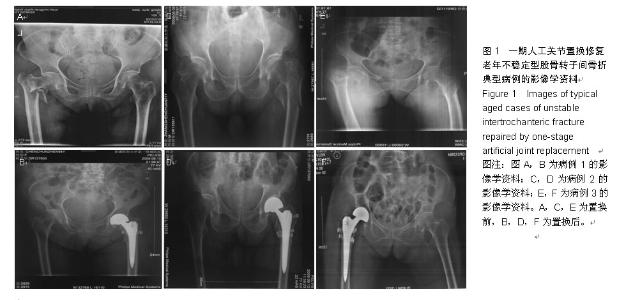| [1] 刘智,张浩,何红英,等.改良POSSUM评分系统在预测老年人股骨粗隆间骨折手术风险中的应用价值[J].中华外科杂志,2010, 48(10):769-773.
[2] 朱江涛,卫小春.股骨粗隆间骨折分型[J].实用骨科杂志,2007, 13(7):410-412.
[3] Gross JB. Estimating allow able blood loss: corrected for dilution. Anesthesiology. 1983;58(3):277-280.
[4] Grimsrud C, Monzon RJ, Richman J, et al. Cemented hip arthroplasty with a novel circlage technique for unstable intertrochanteric hip fracture.J Arthroplasty. 2005;20: 337-343.
[5] Bonnevialle P, Saragaglia D, Ehlinger M, et al. Trochanteric locking nail versus arthroplasty in unstable intertrochanteric fracture in patients aged over 75 years. Orthop Traumatol Surg Res. 2011;97(6 Suppl):S95-100.
[6] Abouelela AA. Salvage of Failed Trochanteric Fracture Fixation Using the Revitan Curved Cementless Modular Hip Arthroplasty. J Arthroplasty. 2012;27(7):1382-1388.
[7] Bonnaire F, Lein T, Bula P. Trochanteric femoral fractures: anatomy, biomechanics and choice of implants. Unfallchirurg. 2011;114(6):491-500.
[8] Zhou Z, Xiong J, Jiang N, et al. Analysis of the treatment failures for intertrochanteric fractures with dynamic hip screw (DHS). Zhongguo Gu Shang. 2010;23(5):340-342.
[9] Zhang C, Wang PJ, Ruan DK, et al. Complications of surgical treatment for femoral intertrochanteric fractures using dynamic hip screw. Zhongguo Gu Shang. 2009;22(8):624- 626.
[10] Azegami S, Gurusamy KS, Parker MJ. Cemented versus uncemented hemiarthroplasty for hip fractures: a systematic review of randomised controlled trials. Hip Int. 2011;21(5): 509-517.
|

